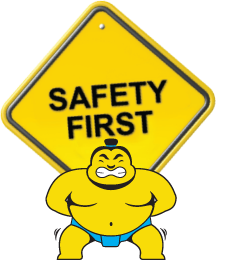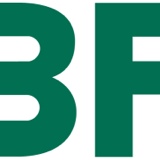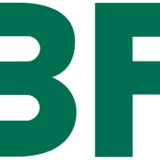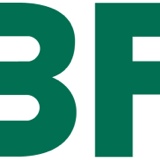Title Page
-
Document No.
-
Workplace Inspection
-
Client / Site
-
Location
-
Conducted on
-
Prepared by
DOCUMENT
-
HIRADC
-
Emergency Respond Team
-
SHE Committee
-
incident investigation form
-
Work instruction
-
Safety Data Sheet
AISLE-WAYS AND PASSAGEWAYS
-
Aisles marked
-
Clear and unobstructed
-
At least 28 inches wide or as prescribed
-
Sufficient width for all normal movements
CHEMICALS AND FUELS
-
Tanks/drums of steel or appropriate material
-
Adequate spill containment
-
Proper spill absorbent materials and/or drainage provided
-
Container corrosion prevention provided
-
Tanks/drums adequately supported
-
Storage heated by means not constituting a source of ignition
-
Approved portable safety containers used as required
-
No-smoking signs posted where required
-
Non-arcing type fans in hazardous substance storage areas
-
Materials separated to avoid incompatibility reactions
-
Means of exit/egress prescribed
COMPRESSED GASES
-
Stored upright and secured against falling over
-
Segregated by contents and legibly marked
-
Protection against rust/corrosion
-
Stored away from heat sources
-
Stored away from stairs, elevators, and egress routes
-
Inspected for dents, corrosion, test records
-
Adequate ventilation in storage areas
ELECTRICAL POWER SYSTEMS
-
High-voltage and control panels closed and secured
-
Control panels identified and accessible
-
Good condition of wiring, insulation and fixtures
-
Grounding tested
-
Flexible cords free of splices
-
Lock-out provisions as prescribed
-
Equipment being locked-out provided with individual disconnects
-
Electrical equipment protected from fluids
ERGONOMIC FACTORS
-
Design allows normal body positions when seated or standing
-
Controls sized to permit operation with clothing/equipment normally worn
-
Controls follow normal response patterns (down for off, etc.)
-
Standard color-coding used for warnings and informational displays
-
Hand tools used permit normal body positions
-
Limited weight and size of materials lifted or carried by people
-
Lifting and twisting in combination not required in the workplace
EMERGENCY INSTRUCTIONS
-
Operational placards/decals on emergency controls (on-off, open-close, etc.)
-
Emergency instructions at primary telephone in each work area
-
Fire Hazard symbols on facilities containing hazardous substances
-
Backup communication systems available
EMERGENCY RESCUE EQUIPMENT
-
Adequate equipment available and properly located
-
Proper serviceable condition
EXIT/EGRESS
-
Sufficient exits for prompt escape
-
No locks or fastenings restricting escape
-
Routes and exits clearly marked
-
Exits and exit signs adequately illuminated
-
More than one exit from work area
-
Approaches to exits unobstructed
-
Flammables kept out of exits
-
At least 28 inches wide or as prescribed
-
Open outward onto level floor
FIRE PROTECTION
-
Portable extinguisher appropriate for types of materials and readily available
-
Extinguisher Health, safety and Environment inspected quarterly
-
Fire Hose properly mounted, accessible and maintained
-
Fire equipment visibly marked
-
Fire doors, lids and shutters in good repair and unobstructed
-
Sprinkler heads have proper clearance from materials and furnishings
-
Sprinkler master control valves accessible and locked open
-
Adequate personal protective equipment for fire brigade members
-
Floor openings protected
FIRST AID KITS/STATIONS/EQUIPMENT
-
Located as prescribed by legislation
-
Adequate materials and equipment available and properly located
-
Electrical safety items included in high-voltage areas and conditions
-
Names of qualified attendants posted
-
Instructions to accident reporting posted
FLOORS (Walking & Working Surfaces)
-
Clean, orderly, sanitary condition
-
Drainage maintained
-
Free of slip, trip or fall hazards
-
Free of protrusions, nails, etc.
-
Openings covered or barricaded
HYDRAULIC POWER SYSTEMS
-
Pressure regulated within power limits
-
Good condition; no major leaks, dents, nicks and severe scratches of pressure lines and fittings
-
Fluid pressure lines identified
-
Inspections recorded
HAND AND PORTABLE TOOLS
-
Proper general condition of tools, electrical cords, air hose.
-
Proper storage when in use
-
Proper storage when not in use
-
Guards and safety devices serviceable
-
Electrical grounding or double insulation protected
-
Adjustments correct
-
Load rating sufficient for work performed
LADDERS
-
Safety feet in serviceable condition
-
Unpainted and free of grease and oil
-
One person on ladder at a time
-
Properly positioned
-
Doors blocked open, locked, or guarded if in front of ladder
-
Supported in place against window openings
-
Defective ladders have danger tags affixed
-
Metal ladders not used in electrical areas
-
Both rails supported
-
Fixed ladders have landing platforms every 20’ or as locally prescribed and cages as prescribed
LIFTING GEAR/EQUIPMENT
-
Good condition, no damage, cleanliness, lubrication, servicing
-
Legibly labeled as to capacity and load testing
-
Fitted with overhead guards
-
Areas designated for refueling or recharging
-
Controls operational
-
Safe access (steps or platforms) to cab/seat
-
Limit stops operational
-
Hoist motor brakes operational
-
All controls operational
-
Controls permit full, unrestricted operation by operators wearing appropriate clothing and equipment
-
Cable/rope in good repair
-
Hoist chain/rope free of kinks and twists
-
Hooks not deformed or damaged and safety latches intact
-
In-running nip points guarded
LIGHTING
-
Walking and working areas adequately illuminated during periods of occupancy
-
Lighting fixtures clean
-
Illumination level sufficient for detail or work performed
LOCKOUT SYSTEMS
-
Positive lockouts provided for all power systems, individually powered equipment
-
Lock-outs permit multiple lockout
-
Tags or color-codes indicate user of lockout
-
Lock-out system provides means to reduce hazard
MACHINE TOOLS AND GUARDING
-
Proper general condition, no evidence of damage, cleaning and lubrication
-
Mechanical power transmission guarded
-
Pinch points, in-running nip points, and points of operation guarded
-
Fixed guards secured in position
-
Interlock guards operative
-
Automatic and operator guards properly adjusted
-
Operating controls guarded against inadvertent actuation
-
Operating controls locked and keys removed when not in use
-
Emergency stop buttons operational, correctly positioned, labeled, and color-coded
-
Isolation and lockout provided for servicing, setup, lubrication, etc.
-
Guards provided for rotating parts, chips or particles, sparks, kickbacks, etc.
-
Operator and service manuals available
MATERIALS-HANDLING EQUIPMENT
-
Containers in good repair
-
Pallets and skids of correct type and in good repair
-
Chains, slings, and ropes adequate for loads and in good repair
-
Lifting equipment properly stored
-
Wheel chocks provided and used
-
Inspection records available
MATERIALS LABELING
-
Standard labels affixed to all containers of substances in storage and use
-
Standard labels affixed to vehicles transporting hazardous materials, meeting legislated requirements where prescribed
-
Labels legible and visible
MECHANICAL POWER SYSTEMS
-
General condition and servicing
-
Rotating collars, couplings, cams, clutches, flywheels, spindles, shafts, shaft ends, bolt ends, key ends and nip points guarded
-
Transverse moving chains, belts, and slides guarded
-
Emergency stops operational
-
Speed regulated within design limits
MOBILE EQUIPMENT
-
Overhead guards where required
-
Designated areas for recharging
-
Qualified operators only
-
Physical hazards
-
Fire extinguisher
NOISE EXPOSURE
-
Economically-feasible noise controls
-
Protection provided when sound levels exceed standard
-
Hazardous noise areas identified and marked
PERSONAL PROTECTIVE EQUIPMENT
-
Properly used
-
Available
-
Maintained
-
Adequate types
-
Storage facilities
-
Cleaning facilities
PLATFORMS/SCAFFOLDING
-
Working platforms at least 24 inches wide or as prescribed
-
4-inch toe board provided along all sides or as prescribed
-
Proper flooring; nonskid
-
Mesh screen below floor if open construction
-
Safe access to movable platforms
-
Access gates self-closing and locking
-
Equipped with standard guardrail if over 10 feet above floor
-
Sound, rigid footing for scaffolds
-
No accumulation of tools or materials
-
No altering or moving of scaffolds in use
-
Good condition of casters
-
Proper condition of jacks and leveling screws
PNEUMATIC POWER SYSTEMS
-
Pressure-regulated within limits
-
Restraining clips on hose lines
-
Compressor drainage and testing
-
Good condition of hose and connections
-
Air lines identified
-
Condensation properly drained
PRESSURE VESSELS
-
Meters and controls located on operating floor
-
Safety valves operational
-
Inspection certificate/label appropriate to type
-
Pipes, connections, vessels free of dents, notches and severe scratches
-
Shields, platforms and landings as appropriate
-
Remote shutoff to pumps
ROADWAYS
-
Surfaces in good repair
-
Sufficient width and vertical clearance
-
Standard signs and marks
-
Rail sidings in good repair
-
Proper preparations for seasonal weather extremes, e.g., rain, heavy usage, etc.
SIGNS AND TAGS
-
Hazard warning, directional and informational signs and tags used where there are immediate dangers, potential hazards, or there is a need for general instructions
-
Signs and tags consistent in use throughout facility
-
Tags affixed to all defective equipment
STACKING AND STORAGE
-
Aisle ways and access paths clear and unobstructed
-
Small or irregular-shaped items properly blocked, interlinked, with proper limitations in height of storage
-
All stacks stable and secure against sliding/collapsing
-
Proper drainage in storage area
-
Storage area clean and cleared of foreign objects/materials
STAIRS
-
At least 22 inches wide or as prescribed
-
Angled between 30o to 50o or as prescribed
-
Steps uniform in height and tread depth
-
Outdoor stairs have grating type treads
-
Treads and nosing slip-resistant
-
Handrails provided on open sides
-
Handrails on at least one side if closed
-
Stairways adequately lighted
-
Clear and unobstructed
VALVES AND MECHANICAL CONTROLS
-
Labeled and color-coded
-
Operational
-
Readily accessible
VENTILATION AND EXTRACTION
-
Adequate means provided
-
Air inlets and openings arranged to minimize escape of contaminants
-
Enclosures provide continuous inward airflow
-
Separators provided if air re-circulated
-
Hoods draw air away from people
-
Hoods connected to exhaust system
-
Duct work made of non-combustible material
-
Duct work sealed and adequately supported
-
Clean-out doors provided every 9-12 feet or as prescribed
-
Separation of dust collection equipment from other facilities
WARNING SYSTEMS
-
Fire/emergency alarm systems operational
-
Hazard warning systems on appropriate vehicles and equipment
-
Over-pressure warning systems on pressure vessels
-
Over temperature warning systems on fired pressure vessels, hazardous material storage, powered equipment
-
Warning signs and devices for railway sidings available
WASTE DISPOSAL
-
Adequate number of appropriate metal refuse containers
-
Separate containers provided for oily rags, smoking materials, dusts, flammable scrap, chemical wastes, etc.
-
Safe disposal facilities for wastes
-
Anti-static devices fitted as necessary
-
Chemical spill absorbents available in work areas
Completation
-
Add signature












